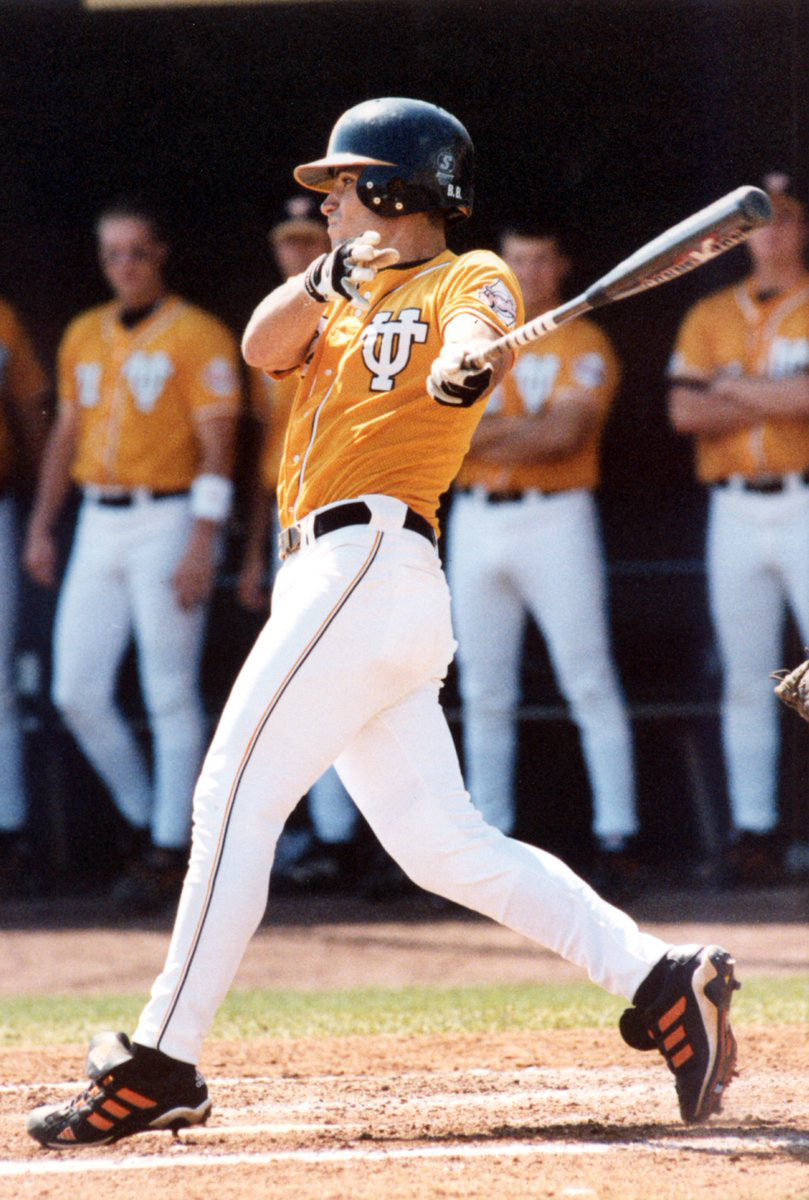 As a sophomore at the University of Tennessee (UT) I had a breakout year. I set the school record for hits in a season, batted over .400, and earned first team All-SEC and All-America honors. That performance earned me the chance to try out for the USA National team in the summer of 2000. Before I left for tryouts, my head coach Rod Delmonico called me into his office for what would prove to be a career-changing conversation.
As a sophomore at the University of Tennessee (UT) I had a breakout year. I set the school record for hits in a season, batted over .400, and earned first team All-SEC and All-America honors. That performance earned me the chance to try out for the USA National team in the summer of 2000. Before I left for tryouts, my head coach Rod Delmonico called me into his office for what would prove to be a career-changing conversation.
Before I left, he wanted to talk to me about my swing – specifically my load (or lack thereof). Although I'd had a productive year, I hit only four home runs. Doubles were not a problem, but I wasn't able to consistently get the ball out of the park. Coach Delmonico suggested that I spend my summer studying the guys I was going to play with (Mark Teixeira and Ryan Howard were both on the team) and try to find a comfortable, consistent way to get some separation in my load. He showed me my video and pointed out that as my front foot went forward my hands did too, putting me in a weak position to swing, and said that he felt I had the power to hit more homers if I could get in a better power position.
I have told this story many times and most people are surprised that he was so bold to attempt to change me and that I was so easily convinced to change. The truth is, I don't think I would have changed without the video. Once I saw the clips of my load and compared it to the best hitters in the world, it was obvious that I needed to change, the question was how?
All summer long, I tried to figure out a way to get my hands moving back as my foot went forward, but I was unsuccessful for the most part. My breakthrough came when I was watching former UT standout and five-time MLB All-Star Todd Helton. I noticed that he started with his hands really high, almost above his head. When he would stride, his front knee would come up as his hands went down and back. I decided I would give it a try and almost instantly, it felt comfortable.
While I didn't implement these changes full-time until I returned to UT, the results came instantly. My teammates had given me a hard time for my lack of BP power, but now I was hitting three or four balls out almost every round. When the season came, the changes I made showed up in a big way: I set school records in hits, slugging percentage and extra base hits and hit five times as many home runs (20). My batting average also went up 30 points! The addition of the leg kick resulted in more separation with my hands and changed my career.
I have spent a lot of time breaking down why I had such a dramatic improvement and why we see so many of the great hitters in the Major Leagues use the leg kick, and have broken it down into two main points:
1) Rhythm and timing.
Maybe the hardest part of hitting is being on time. That is why so many people try to stress getting your "foot down early" so you will be "on time." The problem is if the foot is down too early, we lose our rhythm. When you study the game's greats, you see players who are able to make adjustments to different pitches in different locations traveling at different velocities. The leg kick helps with this by giving the hitter the freedom to be athletic, make minor adjustments, and handle all types of pitches.
2. Engage your legs!
No one would argue with the fact that our legs are the strongest muscles in our bodies. Thus, the act of swinging a bat violently has to include the maximum use of our legs. Oftentimes when hitters don't stride or quick stride, they are susceptible to standing up or never using their lower half. When a hitter uses a leg kick, their entire lower body is activated when their foot hits the ground. They're also able to use the ground to create maximum energy in the swing!
I'm not saying there aren't plenty of hitters that have had success with the no stride or "foot down early" technique; some great hitters past and present (Joe DiMaggio and Albert Pujols instantly come to mind) have used this style with Hall of Fame results. Just like the leg kick isn't for everybody, so is the no stride. The challenge is to get the most out of your swing so that you can be as consistent and powerful as possible. So if you're looking to make a jump in one of those areas, try the leg kick – it certainly worked for me!